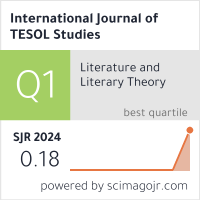2632-6779 (Print)
2633-6898 (Online)


Scopus
Ulrich’s Periodicals Directory (ProQuest)
MLA International Bibliography
MLA Directory of Periodicals
Directory of Open Access Journals (DOAJ)
QOAM (Quality Open Access Market)
British National Bibliography
WAC Clearinghouse Journal Listings
EBSCO Education
ICI Journals Master List
ERIH PLUS
CNKI Scholar
Gale-Cengage
WorldCat
Crossref
Baidu Scholar
British Library
J-Gate
ROAD
BASE
Publons
Google Scholar
Semantic Scholar
ORE Directory
TIRF
China National Center for Philosophy and Social Sciences Documentation
Elif Aydın Yazıcı
Trabzon University, Trabzon, Türkiye
Kenan Dikilitaş
University of Bergen, Bergen, Norway
Abstract
This study reports a longitudinal ethnographic study exploring how two pairs of co-teachers negotiated their professional identities and repositioned themselves in relation to evolving pedagogical translanguaging practices in a bilingual preschool setting in Türkiye. Drawing on Darvin and Norton’s (2015) Model of Investment, the article argues that the teacher identity is shaped by various factors, including their language ideologies, the power dynamics within the classroom, and their investment in translanguaging pedagogy. More specifically, identity development of teachers is examined in relation to how the pedagogical operation of translanguaging creates a new classroom pedagogy and how this newly-emerged pedagogy repositions teachers’ identity. The participants included two homeroom teachers and two English teachers sharing the same classrooms. They took part in a professional development (PD) program comprising mentoring, coursework, and regular collaborative meetings to shape their understanding of bilingual education (BE), and enable them to implement collaborative planning and teaching guided by translanguaging pedagogy. Using data from in-depth interviews, the researcher’s in-field observations, and teacher reflections, the study revealed the teachers gradually developed more dynamic professional identities as they engaged in pedagogical translanguaging practices. Through the shared responsibility in planning and instruction, the Turkish-speaking homeroom teachers, initially positioned as assistants, developed greater authority, autonomy, and visibility in the classrooms. Meanwhile, the English teachers started to view their role as more collaborative rather than being the sole authority figure. The study concludes that translanguaging-based PD fostered a shift from subject-matter roles to bilingual teacher identities and offers implications for teacher education programs.
Keywords
Teacher identity, investment, translanguaging, bilingual education, poststructural approach